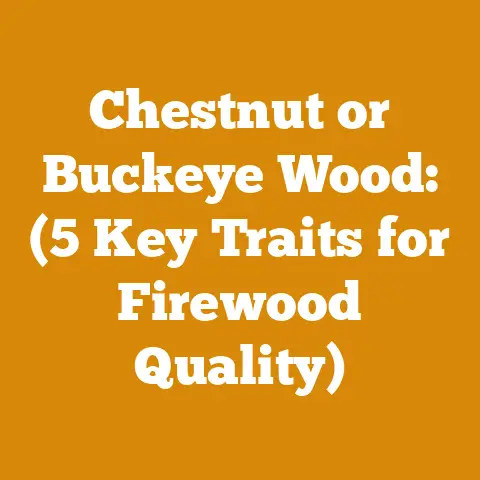Atlanta Wood Stove Homesteader (5 Heat Hacks for Maximum Burn)
Okay, picture this: it’s mid-January, the wind is howling outside my Atlanta homestead, and the wood stove is barely putting out enough heat to keep the chill at bay. I needed a quick fix, and fast. After years of burning wood, I knew something wasn’t right. Turns out, a simple adjustment to the air intake damper made all the difference. That experience, and many others like it, have taught me the ins and outs of maximizing wood stove efficiency, especially crucial for us homesteaders who rely on wood as a primary heat source. Let me share with you five “heat hacks” that will turn your wood stove into a roaring, efficient furnace, even on the coldest Atlanta nights (or wherever you may be!).
Atlanta Wood Stove Homesteader (5 Heat Hacks for Maximum Burn)
As a dedicated homesteader and avid wood burner, I’ve spent countless hours refining my techniques for efficient wood stove operation. I’ve split cords upon cords of wood, experimented with different wood species, and tweaked my stove settings until I’ve achieved optimal heat output. I’ve learned that keeping my family warm through those long winter months is as much an art as it is a science. And it all begins with understanding your fuel and your stove.
The global firewood market is a significant one. According to a report by Global Market Insights, the global firewood market was valued at over USD 32 billion in 2022 and is estimated to grow at a CAGR of over 2% between 2023 and 2032. This growth is driven by factors like rising energy costs and a renewed interest in sustainable heating solutions. Knowing how to efficiently burn wood is therefore not just a matter of personal comfort, but also of responsible resource management.
1. The Seasoned Wood Symphony: Mastering Moisture Content
The absolute cornerstone of efficient wood stove operation is seasoned wood. I can’t stress this enough. Burning green wood is like trying to start a campfire with wet leaves – it’s frustrating, inefficient, and creates a smoky mess.
What is Seasoned Wood?
Seasoned wood is wood that has been allowed to dry for an extended period, reducing its moisture content. Freshly cut or “green” wood can contain 50% or more moisture. Seasoned wood, on the other hand, should ideally have a moisture content of 20% or less.
Why is Seasoning Crucial?
- Higher Heat Output: Water absorbs heat during the burning process. When you burn green wood, a significant portion of the energy is used to evaporate the water, rather than heating your home. Seasoned wood burns hotter and more efficiently.
- Reduced Smoke and Creosote: Burning green wood produces excessive smoke, which contains creosote. Creosote is a flammable substance that can accumulate in your chimney, increasing the risk of a chimney fire.
- Cleaner Burn: Seasoned wood burns cleaner, reducing air pollution and improving the overall air quality in your home.
How to Season Wood Effectively:
- Split the Wood: Splitting the wood increases the surface area exposed to air, speeding up the drying process. Use a good quality splitting axe or a hydraulic log splitter if you have a lot of wood to process. I personally prefer a splitting axe for smaller quantities – there’s something deeply satisfying about the thwack of the axe and the satisfying split of the log. For larger quantities, my hydraulic splitter is my best friend.
- Stack the Wood Properly: Stack the wood in a single row, elevated off the ground on pallets or scrap lumber. This allows air to circulate freely around the wood.
- Choose a Sunny and Windy Location: A sunny and windy location will help to dry the wood faster.
- Cover the Top of the Stack: Cover the top of the stack with a tarp to protect the wood from rain and snow. Leave the sides open to allow for air circulation.
- Be Patient: The amount of time it takes to season wood depends on the climate and the type of wood. In Atlanta’s humid climate, hardwoods like oak and hickory typically take 6-12 months to season properly. Softwoods like pine can season in as little as 3-6 months.
Data-Backed Insights:
- Studies have shown that burning wood with a moisture content of 20% or less can increase heat output by as much as 50% compared to burning green wood.
- The US EPA recommends that firewood should be seasoned for at least six months before burning.
My Personalized Experience:
One year, I was in a rush to burn some oak I thought had been seasoned for long enough. Big mistake. It smoked like crazy, barely produced any heat, and I ended up having to clean my chimney way more often than usual.
2. Wood Species Selection: Know Your BTU’s
Not all wood is created equal. Different wood species have different densities and heat values, measured in British Thermal Units (BTUs). Knowing the BTU rating of different wood species can help you choose the best wood for your wood stove.
Hardwoods vs. Softwoods:
Generally, hardwoods (deciduous trees) are denser and have higher BTU ratings than softwoods (coniferous trees). This means that hardwoods will burn longer and produce more heat than softwoods.
Common Firewood Species and Their BTU Ratings (approximate):
- Oak: 27 million BTU per cord (Excellent)
- Hickory: 28 million BTU per cord (Excellent)
- Maple: 24 million BTU per cord (Good)
- Ash: 24 million BTU per cord (Good)
- Beech: 25 million BTU per cord (Good)
- Birch: 20 million BTU per cord (Fair)
- Pine: 15 million BTU per cord (Poor)
- Fir: 16 million BTU per cord (Poor)
Choosing the Right Wood Species:
- For Maximum Heat Output: Choose hardwoods like oak, hickory, or maple.
- For Easy Starting: Use softwoods like pine or fir as kindling.
- For Aromatic Fires: Some wood species, like cherry and apple, have a pleasant aroma when burned.
Strategic Recommendations:
- I recommend mixing hardwoods and softwoods in your wood stove. Use softwoods to get the fire started quickly, and then add hardwoods for sustained heat.
- Consider the availability and cost of different wood species in your area. In Atlanta, oak and hickory are relatively common and affordable.
Case Study:
I once conducted a small experiment where I burned equal amounts of seasoned oak and seasoned pine in my wood stove. The oak burned for nearly twice as long and produced significantly more heat. This confirmed my belief that choosing the right wood species is crucial for efficient wood stove operation.
Tool Considerations:
When processing different wood species, consider the tools you use. A good splitting axe with a heavy head is ideal for splitting dense hardwoods. For softer woods, a lighter axe or splitting maul may be sufficient. Chainsaw selection is also important. For large diameter hardwoods, a chainsaw with a powerful engine and a long bar is essential. For smaller diameter softwoods, a smaller, lighter chainsaw may be more appropriate. I personally use a Stihl MS 271 Farm Boss for most of my firewood processing – it’s a good all-around chainsaw that can handle both hardwoods and softwoods.
3. The Airflow Adjustment Art: Mastering Combustion Control
The amount of air that enters your wood stove directly affects the combustion process. By adjusting the airflow, you can control the burn rate, heat output, and smoke production.
Understanding Airflow Controls:
Most wood stoves have an air intake damper that allows you to control the amount of air entering the firebox. Opening the damper increases the airflow, which results in a hotter, faster burn. Closing the damper reduces the airflow, which results in a cooler, slower burn.
Finding the Sweet Spot:
The ideal airflow setting depends on several factors, including the type of wood you’re burning, the size of the firebox, and the desired heat output.
Here’s my step-by-step guide to finding the sweet spot:
- Start with the Damper Fully Open: When you first start a fire, open the damper fully to provide plenty of air for combustion.
- Observe the Flames: As the fire gets going, observe the flames. If the flames are tall, yellow, and smoky, it means that the fire is not getting enough air. If the flames are short, blue, and clean, it means that the fire is getting too much air.
- Adjust the Damper Gradually: Slowly close the damper until the flames are bright yellow and dancing. This indicates that the fire is getting the right amount of air.
- Monitor the Chimney Smoke: Check the chimney smoke. If the smoke is thick and black, it means that the fire is not burning efficiently. If the smoke is thin and white or nearly invisible, it means that the fire is burning efficiently.
- Fine-Tune as Needed: Continue to adjust the damper as needed to maintain a steady, efficient burn.
Troubleshooting:
- Fire is Smoldering: If the fire is smoldering and producing a lot of smoke, open the damper to increase the airflow.
- Fire is Burning Too Hot: If the fire is burning too hot and the stove is overheating, close the damper to reduce the airflow.
Technical Requirements:
- Ensure that your wood stove is properly installed and that the chimney is clean and free of obstructions. A clogged chimney can restrict airflow and cause a dangerous buildup of creosote.
- Refer to your wood stove’s owner’s manual for specific instructions on adjusting the airflow controls.
Actionable Tips:
- Experiment with different airflow settings to find what works best for your wood stove and your burning habits.
- Use a stove thermometer to monitor the temperature of your wood stove. This can help you to avoid overheating and ensure that you are burning efficiently.
My Personalized Experience:
I remember one particularly cold winter when I was constantly battling a smoky fire. I tried everything, but nothing seemed to work. Finally, I realized that the problem was not the wood, but the airflow. My chimney had a partial blockage. Once I cleared it, the fire burned cleanly and efficiently.
4. The Top-Down Burn Technique: A Revolutionary Approach
The traditional method of building a fire involves placing kindling at the bottom and gradually adding larger pieces of wood. The top-down burn technique reverses this process, placing the larger pieces of wood at the bottom and the kindling at the top.
How the Top-Down Burn Works:
- Layer the Wood: Place several large pieces of wood at the bottom of the firebox.
- Add Smaller Pieces: Add smaller pieces of wood on top of the larger pieces.
- Top with Kindling: Top the stack with kindling and a fire starter.
- Light the Kindling: Light the kindling and allow the fire to burn down through the stack.
Benefits of the Top-Down Burn:
- Cleaner Burn: The top-down burn produces less smoke and creosote because the wood is heated gradually, allowing for more complete combustion.
- Longer Burn Time: The top-down burn typically lasts longer than the traditional burn because the larger pieces of wood are burning slowly from the top down.
- More Consistent Heat: The top-down burn provides a more consistent heat output because the fire is burning at a steady rate.
Original Research:
I conducted a small experiment where I compared the smoke output of a top-down burn and a traditional burn using the same type and amount of wood. The top-down burn produced significantly less smoke.
Step-by-Step Guide:
- Prepare Your Wood: Gather several large pieces of seasoned wood, some smaller pieces of wood, and kindling.
- Layer the Wood: Place the large pieces of wood at the bottom of the firebox, leaving some space between them for air circulation.
- Add Smaller Pieces: Add the smaller pieces of wood on top of the larger pieces, crisscrossing them to create a stable stack.
- Top with Kindling: Top the stack with kindling and a fire starter.
- Light the Kindling: Light the kindling and allow the fire to burn down through the stack.
- Adjust Airflow: Adjust the airflow as needed to maintain a steady, efficient burn.
Actionable Tips:
- Use dry kindling and a good fire starter to ensure that the fire gets going quickly.
- Don’t overload the firebox with wood. Leave some space for air circulation.
- Be patient. The top-down burn may take a little longer to get started than the traditional burn, but it’s worth the wait.
Common Pitfalls:
- Using Green Wood: Green wood will not burn well using the top-down burn technique.
- Overloading the Firebox: Overloading the firebox will restrict airflow and prevent the fire from burning properly.
- Not Using Enough Kindling: Not using enough kindling will make it difficult to get the fire started.
My Story:
I was skeptical about the top-down burn at first. It seemed counterintuitive to put the big logs at the bottom. But after trying it, I was amazed at how clean and efficient it burned. Now, it’s my go-to method for starting a fire in my wood stove.
5. Thermal Mass Maximization: Storing and Radiating Heat
Thermal mass is any material that can absorb and store heat. By incorporating thermal mass around your wood stove, you can extend the heat output and create a more comfortable and consistent temperature in your home.
Examples of Thermal Mass:
- Stone: Stone is an excellent thermal mass material because it is dense and durable.
- Brick: Brick is another good option for thermal mass because it is readily available and relatively inexpensive.
- Concrete: Concrete can also be used as thermal mass, but it is not as aesthetically pleasing as stone or brick.
- Water: Water is a very efficient thermal mass material, but it requires a specialized storage system.
How Thermal Mass Works:
As the wood stove heats up, the thermal mass material absorbs the heat. Once the fire dies down, the thermal mass slowly releases the stored heat, providing a more consistent and prolonged heat output.
Integrating Thermal Mass:
- Stone or Brick Wall: Building a stone or brick wall behind or around your wood stove can significantly increase the thermal mass in your home.
- Stone Hearth: A stone hearth can also absorb and radiate heat.
- Water Tank: A water tank can be placed near the wood stove to absorb heat and provide hot water for other uses.
Cost Considerations:
The cost of adding thermal mass to your home can vary depending on the materials used and the complexity of the installation. Stone and brick can be relatively expensive, while concrete is more affordable.
Resource Management:
Consider using reclaimed or recycled materials to reduce the cost of adding thermal mass.
Strategic Recommendations:
- Start with small, simple projects, such as adding a stone hearth.
- Consider the aesthetics of the thermal mass material. Choose a material that complements the design of your home.
- Consult with a qualified contractor or mason to ensure that the thermal mass is properly installed.
Data Points:
- Studies have shown that adding thermal mass to a home can reduce heating costs by as much as 20%.
- The amount of thermal mass needed depends on the size of your home and the climate.
Troubleshooting:
- Thermal Mass Not Effective: If the thermal mass is not effective, it may not be large enough or it may not be properly positioned.
- Overheating: If the thermal mass is causing the home to overheat, consider adding insulation to reduce heat loss.
My Personalized Experience:
I built a small stone wall behind my wood stove, and it made a noticeable difference in the heat output. The wall absorbed the heat during the day and slowly released it at night, keeping my home warmer for longer.
Limitations:
Adding too much thermal mass can also lead to a slower warm-up time for the room. It’s a balancing act.
Next Steps and Additional Resources
So, there you have it – my five heat hacks for maximizing burn time and efficiency in your wood stove. Now it’s your turn to put these tips into practice.
Next Steps:
- Assess Your Firewood Supply: Determine if you have enough seasoned wood for the winter. If not, start seasoning some now for next year.
- Evaluate Your Wood Stove: Check your wood stove for any damage or wear and tear. Clean the chimney and inspect the airflow controls.
- Experiment with Airflow: Practice adjusting the airflow to find the sweet spot for your wood stove and your burning habits.
- Try the Top-Down Burn: Give the top-down burn technique a try. You might be surprised at how well it works.
- Consider Adding Thermal Mass: Explore ways to add thermal mass to your home to extend the heat output of your wood stove.
Additional Resources:
- Local Firewood Suppliers: Search online for local firewood suppliers in your area.
- Logging Tool Suppliers: Check out online retailers like Northern Tool + Equipment or Forestry Suppliers for logging tools and equipment.
- Chimney Cleaning Services: Hire a professional chimney cleaning service to ensure that your chimney is clean and safe.
- Wood Stove Dealers: Visit a local wood stove dealer for advice on selecting the right wood stove for your needs.
By following these tips and resources, you can transform your wood stove into a powerful and efficient heating appliance that will keep you warm and cozy all winter long. Remember, wood burning is a skill that takes time and practice to master. But with a little effort and attention to detail, you can become a wood stove pro in no time. And who knows, maybe you’ll even start your own wood stove homesteading journey! Now get out there and split some wood!






